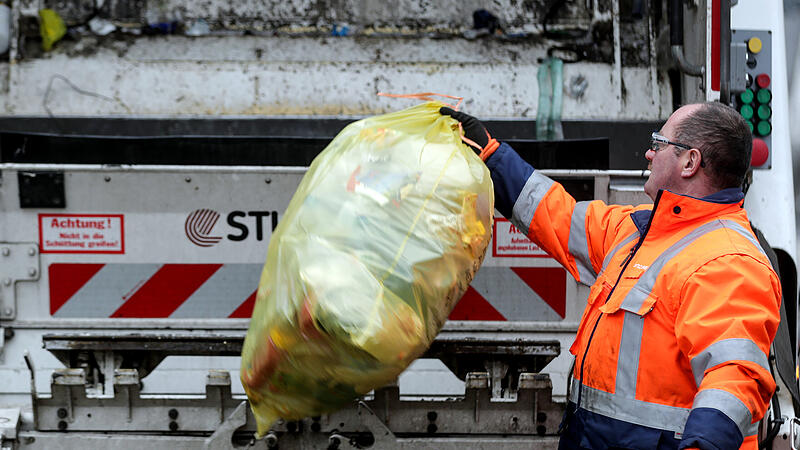Image: Volker Weihbold
“There is hardly any other area where you can read so much about life and consumer behavior as from our personal waste and recyclables disposal behavior,” says Roland Wohlmuth, Chairman of the District Waste Association (BAV) Schärding. Volumes have fallen over the past year. “We are noticing that – as in the time before Corona – people are consuming less at home, fewer Amazon packages are being transported around and the apartments and houses should also be cleared out.” It is also noticeable that the economy in particular has realized how valuable various types of waste are, says Wohlmuth.
“In particular, the quantities delivered to the waste collection center by small and medium-sized companies are noticeably smaller, since they are picked up by commercial waste disposal companies at the company’s premises.” This is a bad development for the balance sheet of the BAV, especially since the proceeds from these recyclable materials do not benefit the citizens – even if there have been no major slumps so far, says Wohlmuth, who calls for staying true to the tried-and-tested disposal methods.
From the point of view of the BAV, the residual waste with 4866 tons (minus 0.69 percent compared to 2021) remains the “largest” fraction that is picked up directly from the household. In a year-on-year comparison, 7.44 percent or 213.9 tons less was collected using the paper bin.
The amounts of paper and cardboard in the waste collection centers (ASZ) have also fallen. There was a slight decrease in volume of 1.87 percent or 22 tons for the yellow bag – in the previous year around 8800 less yellow bags were collected, according to BAV Schärding.
A decline of more than six percent was registered for metal packaging. The decline in “packaging films” by eleven percent was striking, with the poaching of “small business customers” by commercial collectors being one aspect.
In the case of organic waste, the return to “normal” after the corona-related restrictions had an impact in terms of quantity. During the lockdowns, more people cooked at home, but this has recently changed somewhat: If less cooking is done at home, not only does the amount of packaging in the yellow bag decrease, but also the amount of food waste in the “organic bag”.
Waste volumes as an indicator
The general economic development is reflected in the quantities at the ASZ. Rising raw material prices are increasing the competition from commercial collectors – combined with falling quantities, especially for fractions such as scrap iron, non-ferrous metals, packaging foils in the ASZ. According to the association, the high inflation and the higher hurdles for credit would have very likely postponed some conversions or new buildings.
Signs of this are lower volumes of building rubble (minus 164 tons) and waste wood (minus 390 tons).
After the lockdowns, the time to clean out the basement, attic and closet is over. In the ASZ, 18 tons less textiles and 1.4 tons less shoes were handed in. The amount of bulky waste fell by around 100 tons to 1288 tons.
Source: Nachrichten




